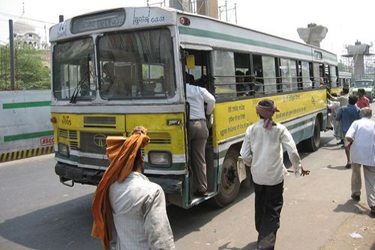In India and Elsewhere, Laws Without Accountability Won’t End Gender Violence or Bring Justice to Its Victims
The death from gang rape of a 23-year-old student has turned a spotlight on India’s gender norms. In response, Human Rights Watch has come out with a series of policy recommendations for India. But without effective enforcement, these laws won't even move the needle on acts of violence against women.

I will never understand the gender dynamics that exist uniquely on Indian buses.
While often, the first three rows of the bus are imprinted with a sign reserving seats for women, those who are pregnant, or the disabled or elderly, in practice this gesture is quickly abandoned. Young, working class men occupy the seats. Their expression alone demonstrates their self-appointed right to be there. No one questions it.
Twice daily, I’d board the bus with my colleagues for the hour-long commute to work. The men sat happily and the women stood. It was the way it was.
In the stairwell by the open door, holding on for dear life, dust from the road in your eyes and throat while the loud bangra beat boomed in time with the debris caught in the wheels—there was something about it that was at the same time terrifying and exhilarating. We’d glimpse at our male colleagues, comfortably seated in the back, and know that at least we’d have something to complain about later. For us, it was a cultural experience that we could easily leave behind.
Certain bus rides in India can’t be forgotten. I remember a late-night bus to Chandigarh, and what it felt like to fondled by a stranger for hours at a time. I shrieked and appealed to the other riders—mostly Buddhist monks on the way down from Dharamsala—and even switched seats. Every time I awoke, there he and his hands were.
After he disembarked, he stood under the window where I sat.
“You know I am from a very good caste,” he justified. “Most women would have been grateful for what I have done to you.”
I brushed the incident as minor, just another consequence of traveling in India. But I will never forget what it was like to turn my head and look into the eyes of the other bystanders, fellow travelers who knew what was happening, but said nothing.
Since December 16, when a 23-year-old student was gang-raped on a Delhi bus and later died from her injuries, a spotlight has been turned on India’s gender norms. While controversy spews around a culture of victim-blame, a medical system where the “two-finger test” reinforces prevailing assumptions that women who are raped are “loose,” and a justice system that assumes a “name and shame” policy is a punishment fitting the crime, it is finally clear how deep and entrenched these issues are.
And then, in India, it happened again. Another bus, another 29-year-old woman, who was then casually dropped off in her village sometime after the sun rose.
In response, Human Rights Watch has come out with a series of policy recommendations for India. If implemented, will these even move the needle on acts of violence against women? I’ve been an unfortunate witness to the fact that even the laws we champion to protect women—all the way up to a Constitutional law on women’s land rights—bare no teeth at the community level, where leaders and law enforcement may not know such policies exist at all. Or choose to exercise power in their spite.
What really blows my mind about this—the final straw—is the fact that others are out there, waiting to replicate this crime. Like the school shooting phenomenon in the United States, there is something viral and insidious about this brand of violence, and it’s time to find the root causes and snuff them out as quickly as we can.
